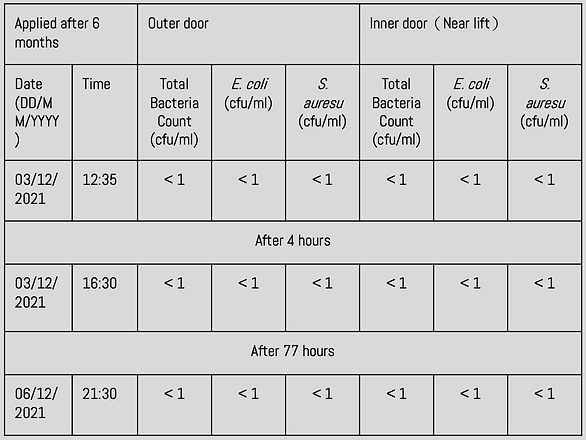

Field Test Locations

The Hong Kong Polytechnic University

Numerous Locations at the Hong Kong Wetland Park

Community Used-Clothes Recycling Banks Throughout Hong Kong Island
3DP Antibacterial Performance

STANADARD TEST: ISO 22196:2011 FOR 3D-PRINTED PLASTIC SAMPLES WITH ANTIVIRUS3D (IMU+®)
Antivirus3D (IMU+®) shows promising antibacterial effects against pathogenic S. aureus and E. coli, which are the representative gram-positive and gram-negative bacteria, according to ISO 22196:2011. Even if the surface of Antivirus3D product has been abraded with sandpaper seriously, wiped with 1:49 bleach solution continuously or treated by the both, the instant biocidal and 24-hour biostatic performances can be maintained.
HKWP ANTIVIRUS3D (IMU+®) PRODUCTS: ASSESSED THE PRODUCTS APPLIED IN HKWP FOR 5 MONTHS ACCORDING TO ISO 22196:2011
The trial application of Antivirus3D (IMU+®) products in Hong Kong Wetland Park was a successful case. After a 5-month field application, the trial products were collected back to the testing labs for evaluating their antibacterial efficacies at that time. Most of the facilities’ covers still offered remarkable contact-killing and full-day inhibition towards S. aureus and E. coli. It was also possible to improve their antibacterial powers by abrading the surfaces with sandpaper properly to rebuild their antibacterial surfaces.


FIELD TEST - ANTIMICROBIAL DOOR HANDLES FOR POLYU'S CARPARK ENTRANCE
The door of car park entrance in The Hong Kong Polytechnic University was installed Antivirus3D (IMU+®) cover pairs. After 24 weeks of duty, in December 2021, we sampled the surfaces of the covers at three timeslots continually and passed the swab samples to SGS Hong Kong. The test report proven that there were free of bacteria growth, especially for S. aureus and E.coli.
ANTIBACTERIAL TESTS FOR ACCELERATED-AGED SAMPLES
We further studied the serviceability of Antivirus3D (IMU+®) material. After accelerated aging, 1-, 3- and 5-year equivalent aged plastics fabricated with Antivirus3D (IMU+®) technology are all able to preserve their prolonged and significant biocidal and biostatic effects, to protect the users from K. pneumoniae, S. aureus and E.coli.





